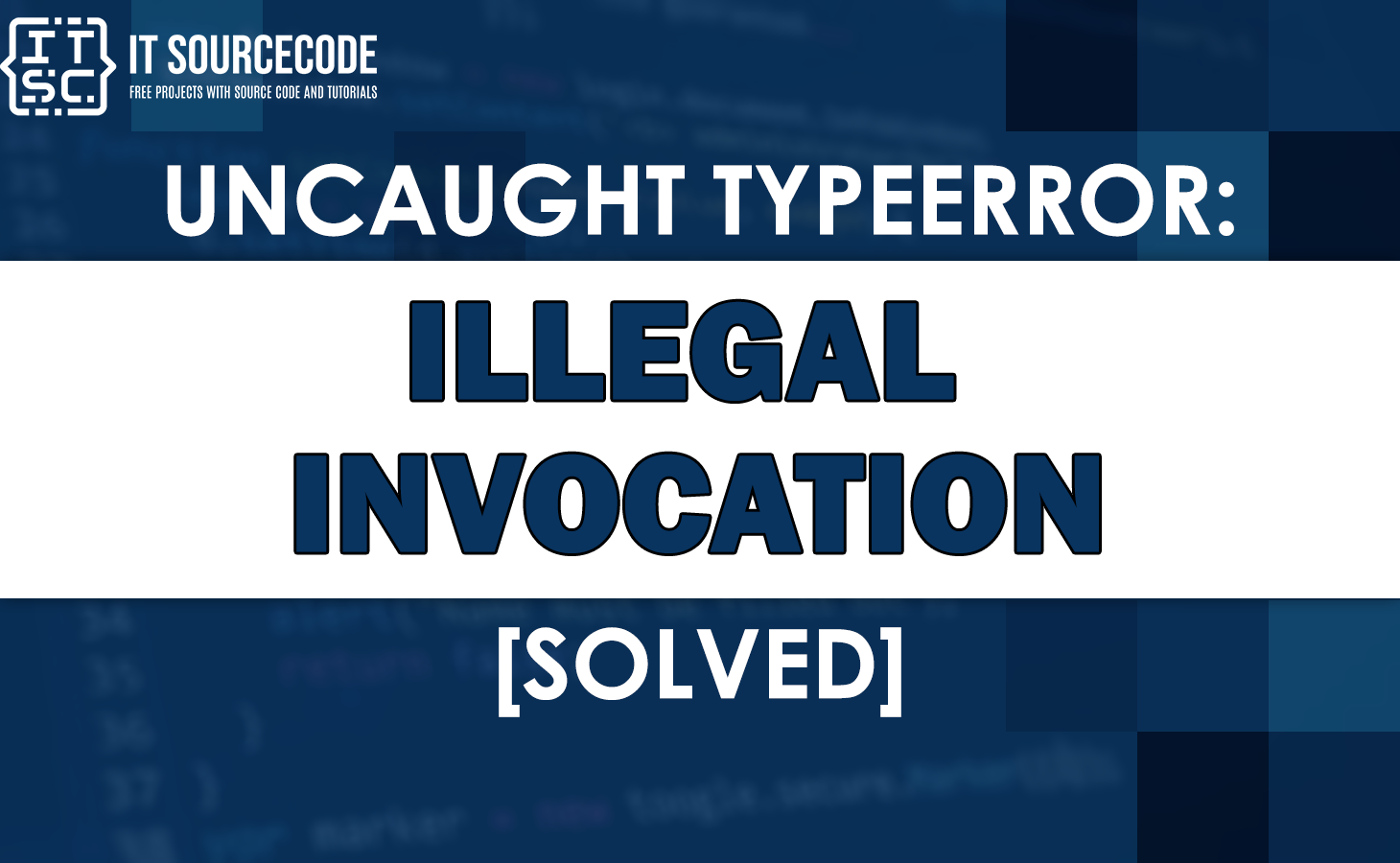In this article, we will walk you through how to fix the “uncaught typeerror: illegal invocation” error message in detail.
Keep reading as we are going to discuss what this error means and what causes it.
So that you’ll understand this error thoroughly and it will be easier for you to troubleshoot this “typeerror: illegal invocation” error message.
What is “uncaught typeerror: illegal invocation”?
The “uncaught typeerror illegal invocation” is an error message in JavaScript that occurs when you try to call a function in a way that is not allowed by the language.
In addition to that, this error message usually appears in the console of the browser, making it easier to identify and fix.
Indicating that there is an issue with your JavaScript code.
Why does this error occurs?
This error can occur for various reasons, such as:
→ “this” is not set correctly.
→ Calling a function with the wrong number or type of arguments.
→ Calling a function without the correct context object.
→ Calling non-method functions as if they were methods.
How to fix “uncaught typeerror: illegal invocation”?
The following are the different solutions you use to troubleshoot the “typeerror: illegal invocation” error message.
Solution 1: Check the context of “this”
You have to check the context of “this” and ensure it is set to the correct value.
The bind() method is used to set the value of “this” to the obj object.
function myFunction() {
console.log(this);
}
var obj = { website: "Itsourcecode" };
var boundFunction = myFunction.bind(obj);
boundFunction();
The bind() method allows us to explicitly set the context or “this” object for a function.
Output:
{ website: 'Itsourcecode' }Solution 2: Use “call” or “apply” correctly
You have to ensure you’re passing the correct arguments to these methods.
The call () method is used to set the value of “this” to the obj object, and two arguments are passed to the myFunction function.
function myFunction(arg1, arg2) {
console.log(this);
console.log(arg1);
console.log(arg2);
}
var obj = { website: "Itsourcecode" };
myFunction.call(obj, "welcome", "to a website that offers free tutorials");
The call() and apply() methods also allow us to explicitly set the context or “this” object for a function.
Output:
{ website: 'Itsourcecode' }
welcome
to a website that offers free tutorialsSolution 3: Use dot notation to call methods
You can also use the dot notation to call methods.
The call() method is used to set the value of “this” to the obj object, and the sayHello method is called using dot notation.
var obj = {
website: "Itsourcecode",
sayHello: function() {
console.log("Hello, " + this.website);
}
};
var sayHelloFunc = obj.sayHello;
sayHelloFunc.call(obj);
Output:
Hello, ItsourcecodeSolution 4: Using Arrow Functions
The arrow functions provide a more concise syntax for writing functions in JavaScript.
Apart from that it also have a lexical this keyword, which means that the this keyword inside an arrow function always refers to its surrounding context.
const person = {
name: "Caren",
age: 20,
sayHello: function() {
const self = this;
const hello = () => {
console.log(`Hello, my name is ${self.name} and I'm ${self.age} years old`);
};
hello();
}
};
person.sayHello();
We have an object called person with a sayHello() method that uses a regular function.
Inside the sayHello() method, we create a variable called self that refers to the person object.
Then, define an arrow function called hello().
Ouput:
Hello, my name is Caren and I'm 20 years oldHow to avoid the “uncaught typeerror: illegal invocation” error message
To avoid this error, it’s important to ensure that you’re calling your functions with the correct context object and the correct number of arguments.
Using bind, call, or apply to explicitly set the this keyword as needed.
Aside from that, it’s also important to ensure that you’re using the “this” keyword properly within your functions.
Additionally, be careful when passing functions as arguments, as they may lose their context and throw an error.
Frequently Asked Questions (FAQs)
The this keyword in JavaScript, refers to the context in which a function is called. When a function is called as a method of an object, this refers to that object.
Call() and apply() are both methods that can be used to invoke a function with a specified context.
The main distinction between the two is in how arguments are passed to the function: call() accepts a comma-separated list of arguments, while apply() accepts an array of arguments.
Conclusion
By executing the different solutions that this article has already given, you can definitely resolve the “uncaught typeerror: illegal invocation” error message in JavaScript.
We are hoping that this article provides you with sufficient solutions.
You could also check out other “typeerror” articles that may help you in the future if you encounter them.
- Typeerror slice none none none 0 is an invalid key
- Typeerror: cannot read property ‘getrange’ of null
- Typeerror fsevents is not a constructor
Thank you very much for reading to the end of this article.

